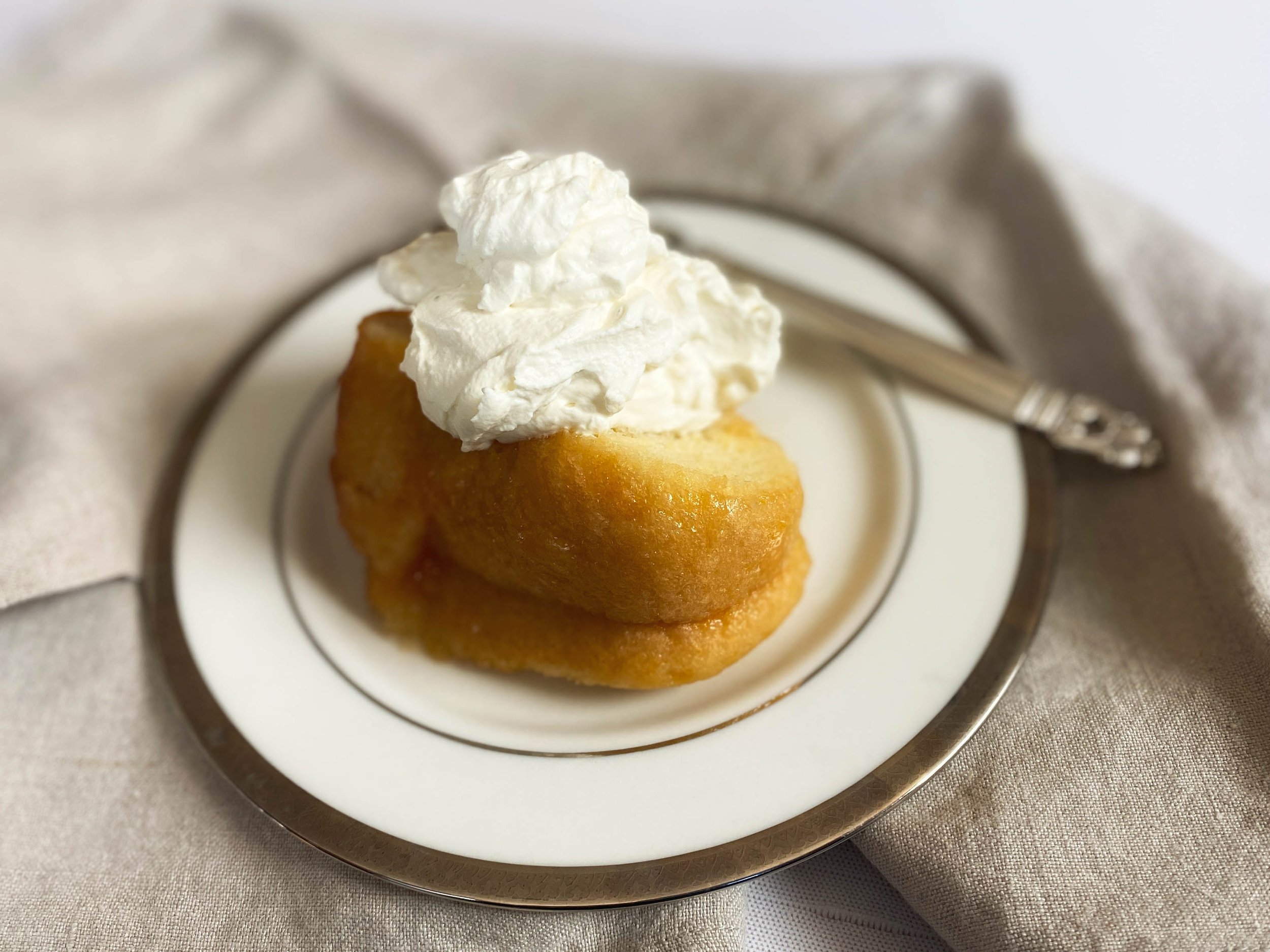By Leslie Brenner
“A forkful of rum-soaked baba and Chantilly is one of life’s great pleasures.” Coming from Aleksandra Crapanzano, that’s really saying something: The food columnist for The Wall Street Journal counts Gâteau, a volume filled with recipes for 117 French cakes, among the three cookbooks she has authored. She grew up in Paris and New York, and currently lives in New York, and no doubt she’s eaten some pretty delicious forkfuls.
Nor is she the only one who feels that way about baba: For eons, whenever I’d ask my husband Thierry what dessert he would like for various special occasions, he’d say “baba au rhum.”
If we were in France, fulfilling that wish would be easy: You find baba au rhum in just about every pastry shop, and pastry shops are everywhere. Chez nous, in the U.S.? Not so easy. I’d gladly have been baking babas all these years, but I didn’t have the requisite savarin mold — a speciality baking pan that’s not easy to source. Baba recipes aren’t exactly a dime a dozen, and one that read as legit never crossed my path. Until last year: For Christmas, Thierry finally got his baba.
I found the recipe in Crapanzano’s latest book, which had recently been published. (It is included in our Ultimate Cookbook Gift Guide.)
It’s a splendid recipe, and Crapanzano solves the problem of the mold by calling for a Bundt pan. In fact, if you use a 6-cup Bundt pan, which I never knew existed, it’s the same size as a savarin mold. Eureka! I ran around the corner to the cookware shop and found one.
A year earlier, I spent many hours researching the history of the dessert, so that if one day I was able to make one I could provide background. I needn’t have bothered; Crapanzano supplies it:
“The history of this classic dates back to the early 1700s, when exiled Polish king Stanislas Leszczynski complained to his pastry chef, Nicolas Stohrer, that the kugelhopfs — the prized cake of Nancy, where he was living — were too dry. Stohrer responded by brushing his next kugelhopf with a rum soaking syrup, and a classic was born. Stanislaus named it baba after his favorite fictional character, Ali Baba, and the name stuck. When Leszczynski’s daughter married King Louis XV, she moved to Paris and brought Stohrer with her — smart woman. He went on to open what remains today one of the great pâtisseries of Paris.”
In case you’re wondering about the Chantilly part of the equation, the stuff that’s on Crapanzano’s happy forkful, that would be crème Chantilly — French for whipped cream. You can either serve each slice, as Crapanzano suggests, with an “excessive dollop” of it, or just before serving you can fill the center of the Bundt-shaped cake with a giant cloud of it.
This, of course, would be a delightful extravagance to finish any kind of holiday dinner. But you could also make a baba between the holidays — or on a dreary afternoon in January or February — and invite friends over to devour it.

